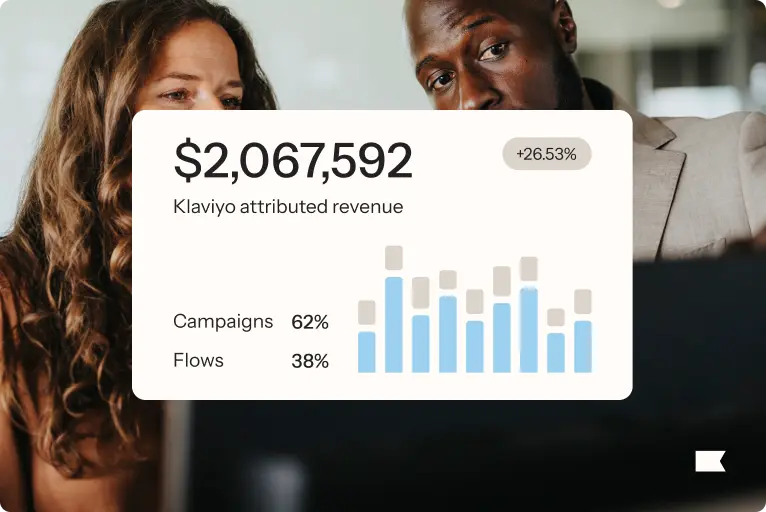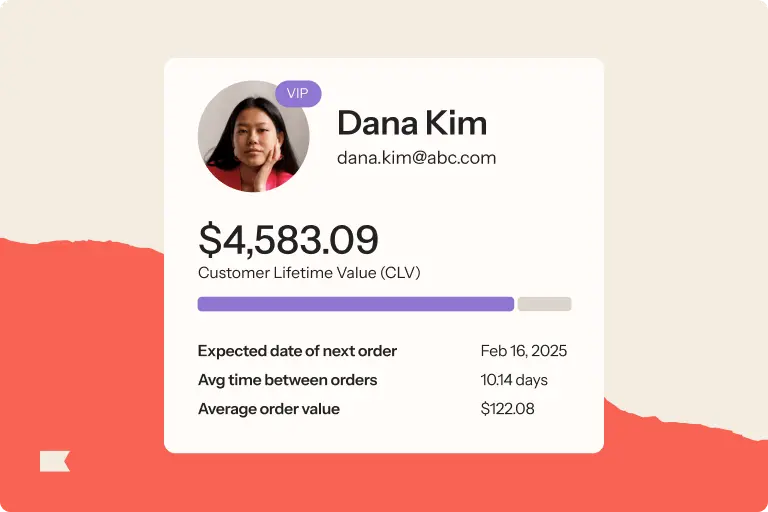6 email and SMS attribution questions to ask when shopping for a marketing platform

Attribution is the foundation of all marketing analysis and decision-making.
And how your brand approaches marketing attribution depends on your tech stack.
If your core email or SMS provider defaults to big, baggy attribution windows that can’t easily be changed, your brand can get stuck in uncertainty. Is this marketing strategy or channel really working?
Even if a marketing automation platform lets you customize attribution windows in your marketing reporting, some uncertainty remains. How often will this provider take credit for revenue another channel claims, too?
When a brand runs a variety of channels using disconnected tools, they’re more likely to get inflated revenue stats from each marketing channel—and mistakenly believe everything is working.
Consolidating multiple channels’ analytics in one software alleviates that issue.
“If you use Klaviyo for email and SMS, you’ll only ever attribute a transaction to one of those channels,” explains Rob Hand, senior product marketing manager at Klaviyo. “So you can actually see what’s working and what’s not working, and that’s a huge advantage.”
“If you use Klaviyo for email and SMS, you’ll only ever attribute a transaction to one of those channels. So you can actually see what’s working and what’s not working, and that’s a huge advantage.
That’s what brands need: not some mythical, perfect attribution set-up, but functional attribution that distinguishes wins from losses.
You can get that by asking the right questions.
Below, we round up the key questions to ask before you sign on with a new email or SMS provider—plus Klaviyo’s answers, courtesy of Hand.
1. What are your platform’s default marketing campaign attribution settings?
Klaviyo uses a last-click attribution model across email and SMS, and our default attribution windows are:
- Email: 5-day open or click. This means if a customer buys within 5 days of opening an email, and the email message was the last owned marketing touchpoint they clicked, their transaction gets attributed to that email in Klaviyo.
- SMS: 24-hour click.This means if a customer buys within 24 hours of clicking a text, and it was the last owned marketing touchpoint they clicked, their transaction gets attributed to that text in Klaviyo.
Especially for SMS, Klaviyo’s default windows are conservative—for good reason, Hand explains.
“Scroll through your phone for a text message you got 7 days ago, and see if you remember it,” Hand says. ��“We think SMS should be set up as a channel for immediate action, and our default attribution reflects that.”
Scroll through your phone for a text message you got 7 days ago, and see if you remember it. We think SMS should be set up as a channel for immediate action.
Understanding attribution defaults across all solutions you’re considering helps you accurately compare wins from different platforms—or understand your free trial results.
In Klaviyo’s free product tier, users can see and customize their attribution settings, Hand explains. But some platforms limit access to attribution settings during the trial stage, or hide them altogether. It’s worth asking those providers for clarification.
2. Can I customize the length of my attribution windows? How much work does that involve?
There are many reasons you might want to customize your attribution windows.
You might think the defaults are overly optimistic, or you might have a unique business model that merits a custom set-up. Brands that sell products with long consideration cycles—like couches or bicycles—may want to set up longer attribution windows that map to their customer journey.
Not every platform makes that easy.
In Klaviyo, you can adjust email and SMS attribution windows in the settings menu by filling in a simple, no-code field.
Every customer has a range of window lengths available to them:
- Email: 1-60 days
- SMS: 1-72 hours
It’s not always this straightforward, though. It’s worth asking about custom attribution up front, and requesting a walkthrough of the customization process.
3. Can I customize the action that starts an email marketing attribution window?
If a provider’s default attribution window starts when someone opens an email, can you change that to start when they click?
In Klaviyo, brands can customize the event that starts an email attribution window, as well as the length of that window.
You can set your windows to open when a subscriber:
- Opens or clicks an email
- Opens or clicks an email, excluding Apple Privacy opens
- Clicks an email
Not every platform allows this level of customization, though—and you want to make sure you can implement your preferred marketing attribution model before you sign a contract.
It’s especially important in light of Apple’s iOS 14.5 update in 2021, which can artificially inflate reported opens from iPhones.
4. Do you start SMS attribution when subscribers receive a text—and if so, can I change that?
In Klaviyo, we only start SMS attribution windows with a click.
SMS providers don’t share data on message opens, and “a click shows stronger intent to purchase than simply receiving a text message,” explains Hand.
A click shows stronger intent to purchase than simply receiving a message.
Some SMS marketing platforms have a different perspective, and default to attribution windows that begin when someone receives a text. Ask if you can customize those windows to start based on a click, instead.
If not, are you comfortable opening your SMS attribution window based on a passive behavior— without an alternative attribution model to compare it to?
5. Can I make sure I don’t attribute a transaction to email and SMS?
If you consolidate email and SMS in one platform, redundant attribution is easier to avoid—but don’t assume it’ll happen by default in every platform.
In Klaviyo, it does. For Klaviyo email and SMS users, our last-click model ensures that if both channels have open attribution windows, whichever message a customer clicked most recently gets credit for their purchase.
That means revenue always gets attributed to one message, in one channel. No double-counting.
That clarity drew Tata Harper to Klaviyo for email and SMS. They initially ran the two channels on different platforms, but decided to consolidate email and SMS in Klaviyo for clearer attribution—and it helped the lifestyle brand grow total Klaviyo-attributed revenue more than 43% in Q1 2024.
6. Can I easily connect email and SMS to an omnichannel attribution platform, like Google Analytics?
Many brands manage all their marketing attributionin a central hub like Google Analytics.
Klaviyo believes our users should own their data—it shouldn’t be stuck in our platform. In that spirit, we make it easy to manage last-click attribution externally.
Klaviyo can automatically attach UTMs to all URLs sent in emails and SMS messages. Default parameters include:
- The name of the list or segment receiving the message
- The channel the message was sent in
- The campaign (or flow) name
Brands can customize their UTMs at the account level or in individual sends, too, and then track clicks and conversions from each link in Google Analytics.
Not every platform makes external attribution straightforward, though, and manually adding and tracking UTMs can be a major timesuck.
Avoid compounding losses by evaluating attribution up front
There’s no one-size-fits-all solution to marketing attribution.
Even for one brand, the best-fit setup can change as revenue grows and the competitive landscape evolves.
There’s just one clear wrong solution: ignoring attribution.
It’s easy to do in a hectic sales cycle, but it can cost a brand down the line—encouraging marketing teams to overspend on channels that only seem to be performing, and scrimp on pillar channels with conservative attribution windows.
Ask the hard questions, and choose platforms with flexible attribution that will suit your business today and tomorrow—like Klaviyo.

Related content

Achieve more in 3 months with Klaviyo Marketing Analytics. This calendar gives you the structure and documentation you need to level up.

Discover 6 data-driven ways to use Klaviyo Marketing Analytics to boost BFCM performance, personalize campaigns, and drive long-term customer retention.

Use this quick customer lifetime value formula to understand your business health and customer experience.